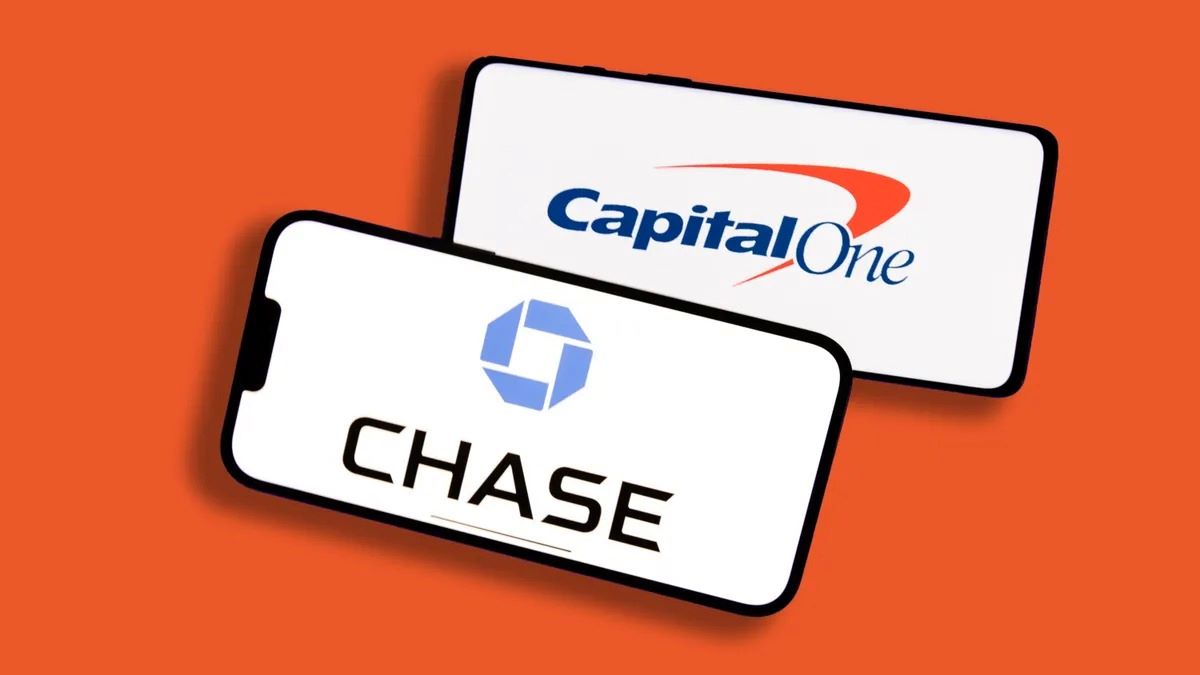

Finance
What Will My Minimum Payment Be On CareCredit
Published: February 27, 2024
Find out the minimum payment for CareCredit with our finance calculator. Easily manage your healthcare expenses and budget effectively.
(Many of the links in this article redirect to a specific reviewed product. Your purchase of these products through affiliate links helps to generate commission for LiveWell, at no extra cost. Learn more)
Table of Contents
Introduction
When it comes to managing healthcare expenses, CareCredit has emerged as a valuable financial tool for many individuals and families. This specialized credit card offers flexible payment options for various medical and wellness services, providing a convenient way to cover out-of-pocket costs not typically included in standard insurance coverage. Understanding how the minimum payment on a CareCredit account is calculated is crucial for responsible financial planning and debt management. In this article, we will delve into the intricacies of CareCredit minimum payments, exploring the factors that influence them and providing insights on how to calculate and manage these payments effectively.
Whether you’re considering using CareCredit for an upcoming medical procedure or already have an existing account, gaining a comprehensive understanding of the minimum payment requirements can empower you to make informed decisions about your healthcare financing. By demystifying the calculation process and offering practical tips for managing CareCredit payments, we aim to equip you with the knowledge needed to navigate this financial tool confidently and responsibly.
Understanding CareCredit
CareCredit is a healthcare credit card designed to help individuals manage medical expenses not covered by insurance. It offers a line of credit that can be used to pay for a wide range of healthcare services, including dental, vision, cosmetic, and veterinary care. With promotional financing options available for qualifying purchases, CareCredit provides the flexibility to manage healthcare costs while offering convenient payment plans.
One of the key features of CareCredit is its ability to cover expenses that may not be fully addressed by traditional insurance plans. This includes deductibles, co-payments, and treatments or procedures that fall outside the scope of standard coverage. By providing a dedicated financing solution for healthcare needs, CareCredit aims to alleviate the financial burden associated with medical care, ensuring that individuals and families can access essential services without undue stress.
Moreover, CareCredit offers varying promotional financing options, such as deferred interest and fixed monthly payments, allowing cardholders to select the most suitable repayment plan based on their financial circumstances. The application process for CareCredit is straightforward, and once approved, cardholders can use it to cover expenses at a wide network of healthcare providers and facilities.
Understanding the scope and benefits of CareCredit is essential for making informed decisions about managing healthcare expenses. By leveraging the features of this specialized credit card, individuals can access the care they need while effectively managing their financial responsibilities. With a clear comprehension of how CareCredit operates, cardholders can navigate the payment structures and promotional financing offers to optimize their healthcare financing experience.
Factors Affecting Minimum Payments
Several factors come into play when determining the minimum payment on a CareCredit account. Understanding these factors is crucial for cardholders seeking to manage their financial obligations effectively. The following elements can influence the calculation of minimum payments:
- Outstanding Balance: The total amount owed on the CareCredit account directly impacts the minimum payment due. As the outstanding balance increases, the minimum payment required to cover at least a portion of the balance also rises.
- Interest Rate: The annual percentage rate (APR) applied to the account balance affects the minimum payment. Higher interest rates lead to larger minimum payments, as a greater portion of the payment is allocated to interest rather than the principal balance.
- Promotional Financing Terms: If the account includes promotional financing for specific purchases, the terms of these promotions can influence the minimum payment. For example, deferred interest promotions may require a higher minimum payment to avoid retroactive interest charges.
- Past Payment History: Cardholders’ payment behavior and history can impact the minimum payment. Late or missed payments may trigger penalty fees and result in an increase in the minimum payment amount.
- Available Credit Limit: The available credit limit on the CareCredit account can affect the minimum payment, especially if the balance approaches or exceeds the credit limit. This can lead to a higher minimum payment to bring the balance within the allowable limit.
By considering these factors, cardholders can gain insight into the dynamics that shape their minimum payment requirements. Being aware of how each element contributes to the minimum payment calculation enables individuals to make informed financial decisions and take proactive steps to manage their CareCredit account responsibly.
Calculating Minimum Payment
Understanding how the minimum payment on a CareCredit account is calculated is essential for effective financial planning. While the specific formula for determining the minimum payment may vary based on the cardholder’s outstanding balance and the terms of the credit agreement, there are common methods used by credit card issuers to calculate this essential payment requirement. Typically, the minimum payment is calculated using one of the following methods:
- Percentage of the Balance: Credit card issuers often set the minimum payment as a percentage of the outstanding balance. This percentage can range from 1% to 3% or more, depending on the terms of the credit agreement. For example, if the minimum payment percentage is 2% and the outstanding balance is $1,000, the minimum payment would be $20.
- Fixed Amount Plus Percentage: Some credit card issuers combine a fixed minimum payment amount with a percentage of the balance. For instance, the minimum payment may be set at $25 plus 1% of the outstanding balance. This approach ensures that a baseline payment is made while adjusting the additional amount based on the balance.
- Interest and Fees: In certain cases, the minimum payment may include accrued interest and any applicable fees in addition to a portion of the principal balance. This method aims to ensure that the cardholder addresses the interest charges and fees to prevent the balance from escalating rapidly.
It’s important for CareCredit cardholders to review their credit card agreement and statements to understand the specific method used to calculate the minimum payment. By gaining clarity on how the minimum payment is determined, individuals can plan their finances effectively and avoid potential pitfalls associated with carrying a high balance and making only the minimum payment each month.
Tips for Managing CareCredit Payments
Effectively managing CareCredit payments is essential for maintaining financial stability and maximizing the benefits of this healthcare financing tool. By implementing the following tips, cardholders can navigate their CareCredit account responsibly and proactively:
- Understand the Terms: Familiarize yourself with the terms and conditions of your CareCredit account, including the minimum payment calculation method, interest rates, and promotional financing details. This knowledge empowers you to make informed decisions regarding your healthcare expenses and payment strategies.
- Create a Payment Plan: Develop a payment plan that aligns with your budget and financial goals. Consider paying more than the minimum amount whenever possible to reduce the balance and minimize interest charges over time.
- Monitor Due Dates: Stay mindful of payment due dates to avoid late fees and penalties. Setting up automatic payments or calendar reminders can help ensure timely payments, contributing to a positive payment history.
- Utilize Promotional Financing Wisely: If your CareCredit account includes promotional financing options, such as deferred interest or fixed monthly payments, strategically utilize these offers to manage larger expenses without incurring substantial interest charges. Be mindful of the terms and deadlines associated with promotional financing to optimize their benefits.
- Communicate with Healthcare Providers: Maintain open communication with your healthcare providers regarding billing and payment arrangements. Inquire about potential discounts, payment plans, or alternative financing options to ease the financial burden of medical treatments or procedures.
- Review Statements Regularly: Routinely review your CareCredit account statements to track your spending, monitor changes in the balance, and verify the accuracy of transactions. Promptly address any discrepancies or unauthorized charges to safeguard your financial well-being.
- Seek Financial Counseling if Needed: If you encounter challenges in managing your CareCredit payments or overall financial situation, consider seeking guidance from a certified financial counselor. They can provide personalized advice and strategies to help you navigate debt management and budgeting effectively.
By implementing these tips, CareCredit cardholders can take proactive steps to manage their payments responsibly, optimize their healthcare financing experience, and work towards achieving greater financial stability.
Conclusion
Navigating the realm of healthcare financing with CareCredit requires a comprehensive understanding of the minimum payment dynamics and effective management strategies. By grasping the factors influencing minimum payments, comprehending the calculation methods, and implementing proactive payment management, cardholders can leverage CareCredit as a valuable tool for accessing essential medical and wellness services while maintaining financial stability.
It is imperative for individuals utilizing CareCredit to approach their financial responsibilities with diligence and foresight. By staying informed about the terms of their account, creating structured payment plans, and leveraging promotional financing options judiciously, cardholders can optimize their healthcare financing experience and mitigate the potential challenges associated with managing medical expenses.
Ultimately, the prudent management of CareCredit payments empowers individuals and families to prioritize their health and well-being without succumbing to undue financial strain. By adhering to responsible financial practices, communicating with healthcare providers, and seeking support when needed, cardholders can navigate their CareCredit accounts with confidence and ensure that their healthcare financing aligns harmoniously with their overall financial well-being.
As the landscape of healthcare and financial services continues to evolve, the knowledge and strategies outlined in this article serve as valuable resources for individuals seeking to make informed decisions and effectively manage their CareCredit accounts. By embracing proactive financial management and leveraging the insights shared here, cardholders can embark on a path towards financial empowerment and enhanced well-being as they utilize CareCredit to address their healthcare needs.














